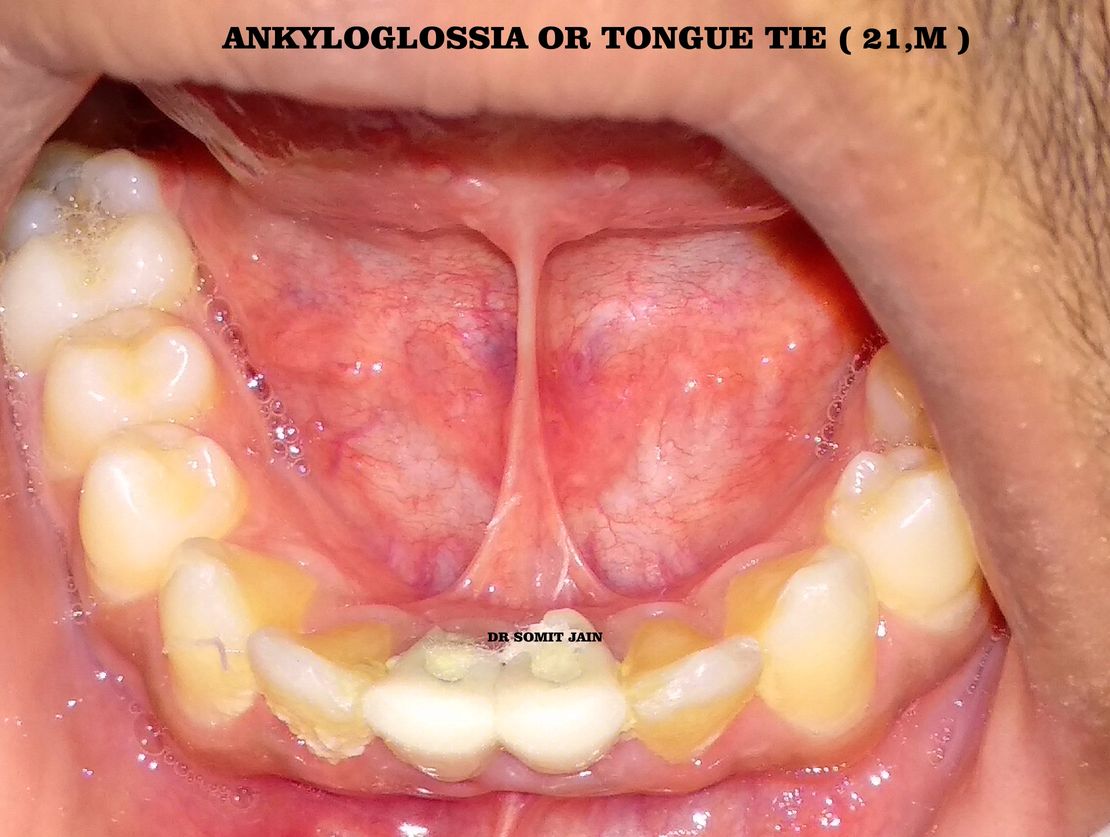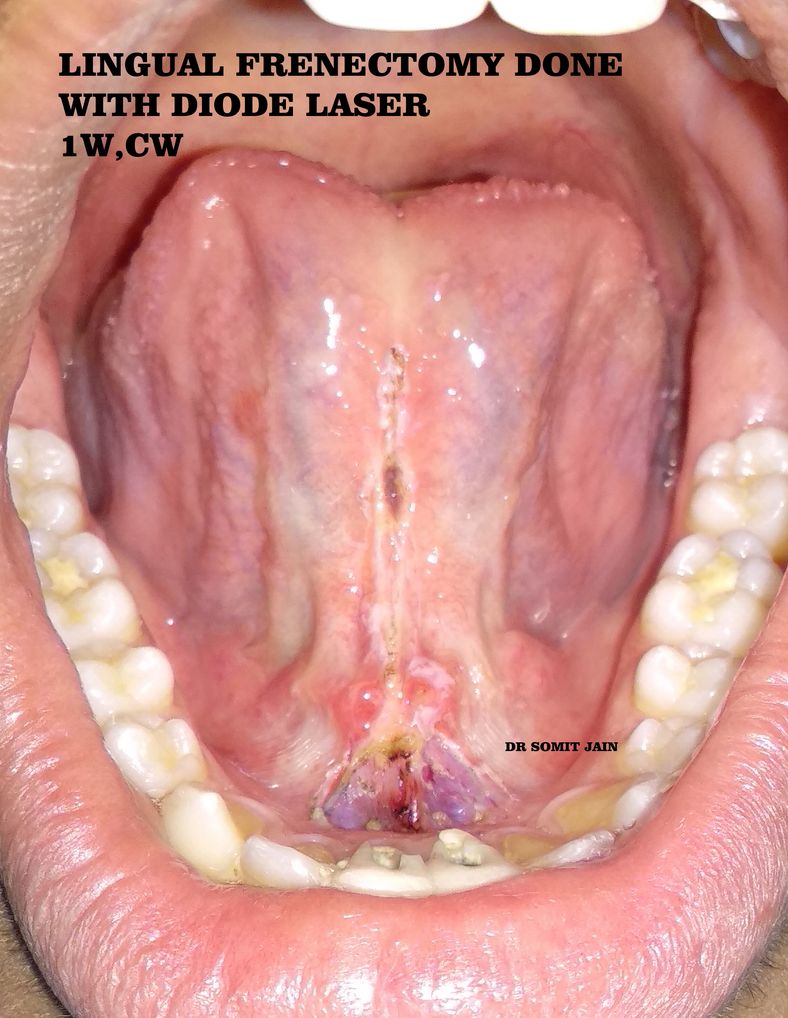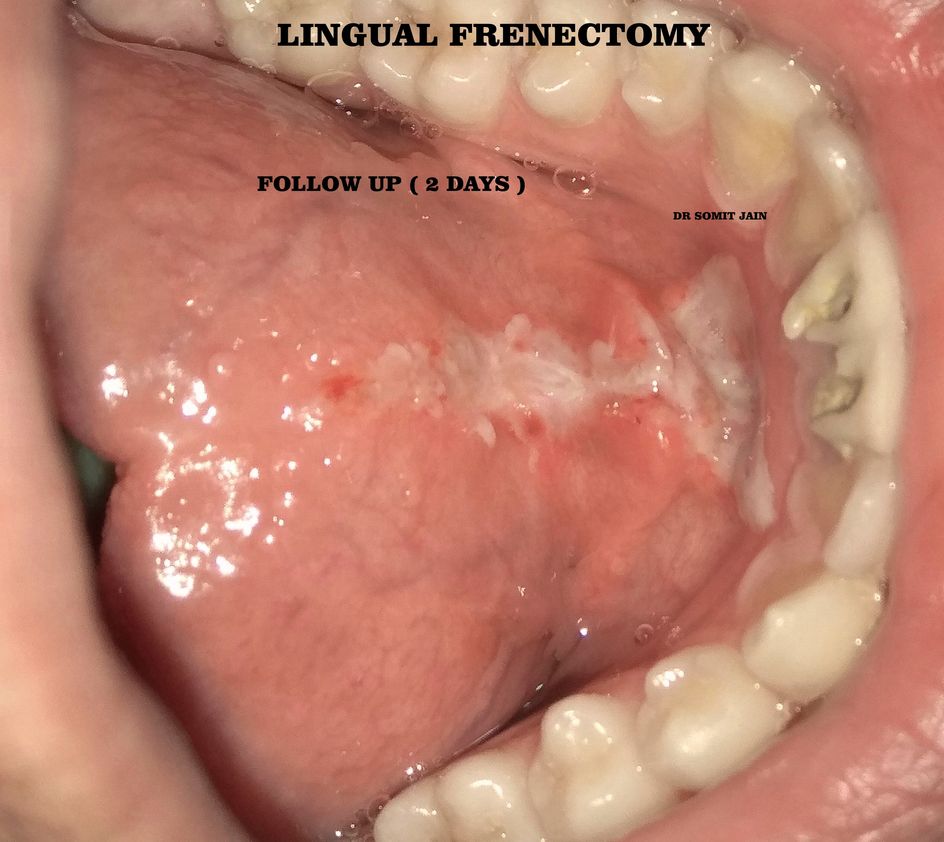Tongue-tie which is also known as Ankyloglossia , is a congenital anomaly characterized by an abnormally short lingual frenulum which may restrict mobility of the tongue tip.
The phenotype varies from absence of clinical significance to rare complete ankyloglossia where the ventral part of the tongue is fused to the floor of the mouth.
The abnormally short lingual frenulum may result varying degree of decreased tongue mobility.
Tongue-tie (Ankyloglossia) has been suggested to cause breast-feeding difficulties (sore nipples, poor infant weight gain, early weaning), speech disorders (impaired articulation), problems with deglutition and dentition, oral-motor dysfunction and social issues related to the limited function of the tongue. (Lauren et al)
ANKYLOGLOSSIA OR TONGUE TIE

ANKYLOGLOSSIA OR TONGUE TIE



Restricted tongue movement on protrusion



A LINGUAL FRENECTOMY (also known as a tongue-tie release) is the removal of a band of tissue (the lingual frenulum) connecting the underside of the tongue with the floor of the mouth.
A lingual frenectomy is performed to correct ankyloglossia (tongue-tie).
ANKYLOGLOSSIA OR TONGUE TIE surgery with Diode Laser



ANKYLOGLOSSIA OR TONGUE TIE surgery with Diode Laser (Follow Up)



Treatment of ANKYLOGLOSSIA OR TONGUE TIE with Diode Laser surgery (Infographic)



